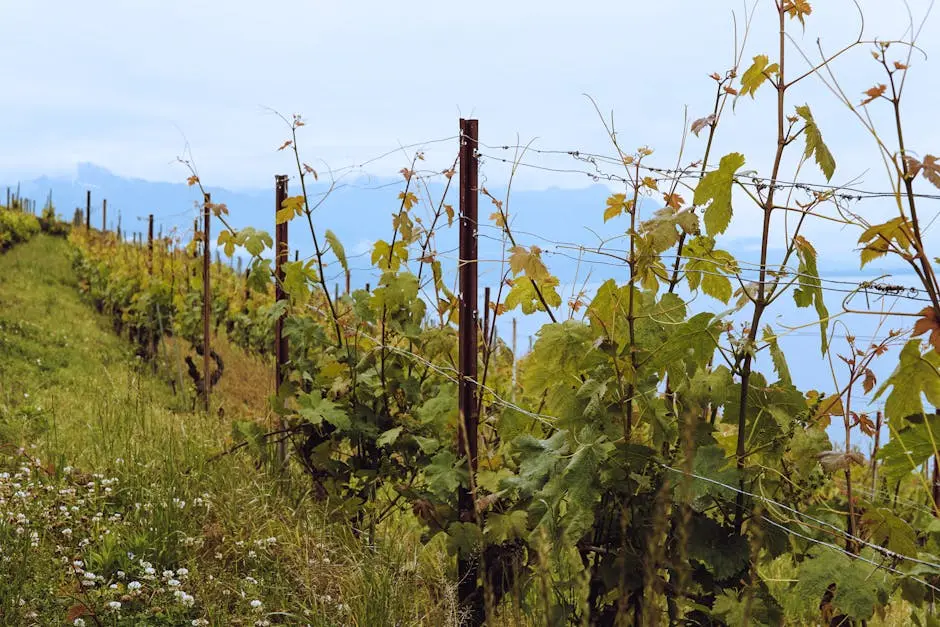The world of wine is as fascinating as it is complex, with every bottle telling a unique story. Cabernet Sauvignon, a favorite among many wine enthusiasts, not only delights the palate but also offers an opportunity to discuss sustainability in viticulture. With environmental concerns at the forefront, winemakers are adopting sustainable practices to ensure that their production processes are as eco-friendly as possible.
The Importance of Sustainability in Viticulture
Sustainability is becoming an essential component of modern viticulture, addressing environmental, social, and economic challenges. For Cabernet Sauvignon producers, implementing sustainable practices not only protects the environment but also enhances the quality and longevity of their vineyards. This means adapting vineyard management to reduce chemical inputs, conserve natural resources, and support biodiversity.
The journey towards sustainability in wine production also aligns with consumer demand for more responsible choices. With an increasing awareness of climate change and its impact on agriculture, consumers are looking for wines produced in environmentally friendly ways. This shift in consumer behavior is pushing vineyard owners to emphasize practices that minimize environmental harm.
Organic Farming Techniques and Their Impact
Organic farming involves natural methods of cultivation and pest control, eschewing the use of synthetic chemicals. For Cabernet Sauvignon vineyards, this can mean healthier soils and grapes, leading to wines with more nuanced flavors and a smaller ecological footprint. Vineyards practicing organic farming often use composting, cover crops, and minimal tillage to maintain soil health.
These organic methods foster a thriving ecosystem within the vineyard itself, which can lead to a greater expression of terroir—the unique characteristics of a wine’s geographic origin. By focusing on the vineyard’s natural rhythm, organic growers can nurture their vines more sustainably over the long term.
The Role of Biodynamics in Winemaking
Biodynamic winemaking goes a step beyond organic practices, considering the vineyard as a holistic ecosystem. Incorporating lunar cycles, compost-based treatments, and wildlife preservation, biodynamics aims to cultivate not just grapes but a balanced environment that can sustain itself. This approach encourages harmony between the vineyard and its surroundings, promoting improved resilience and vitality.
Rooted in the philosophy of Rudolf Steiner, biodynamic practices challenge the conventional separation of agriculture from the influences of moon phases and planetary movements. While this might sound mystical, many winemakers swear by the improved health and quality of their grapes, attributing their success to the symbiotic relationship established in a biodynamic ecosystem.
Water Management in Vineyards
Water is a precious resource in wine production. Innovative practices like drip irrigation, rainwater harvesting, and drought-resistant grape varieties are helping Cabernet Sauvignon producers conserve water while maintaining high-quality production. Drip irrigation delivers water directly to the plant roots, reducing evaporation and water waste.
Given the prevalence of drought in many wine-growing regions, such as California, effective water management is not just a sustainability goal but a necessity. Harvesting rainwater and reusing treated greywater can further mitigate the impact of growing water scarcity. These practices ensure that vineyards can continue to thrive in arid climates.
Reducing Carbon Footprint Through Packaging and Transportation
Winemakers are finding ways to reduce their carbon footprint by opting for lighter packaging materials, using renewable energy in production facilities, and streamlining transportation logistics. These efforts contribute significantly to the sustainability of Cabernet Sauvignon production. For instance, reducing the weight of glass bottles not only saves on raw materials but also decreases fuel consumption during transport.
Additionally, many wineries are now investing in solar panels and other renewable energy sources to power their operations. By transitioning to clean energy, they’re decreasing greenhouse gas emissions associated with their wine production. These innovations in technology and practice are not only environmentally beneficial but also cost-effective, illustrating that sustainable efforts can lead to savings on operational costs.
Towards a Greener Glass: The Future of Cabernet Sauvignon
In the journey towards a more sustainable future, the production of Cabernet Sauvignon stands as a testament to the viticulture industry’s commitment to the environment. By embracing techniques that respect nature and promote biodiversity, winemakers are not only producing exquisite wines but also preserving the planet for future generations. As consumers, supporting these green initiatives can make a significant difference, proving that sustainability and quality can indeed go hand in hand. Visit Lecel to learn more about how you can partake in sustainable wine choices.



